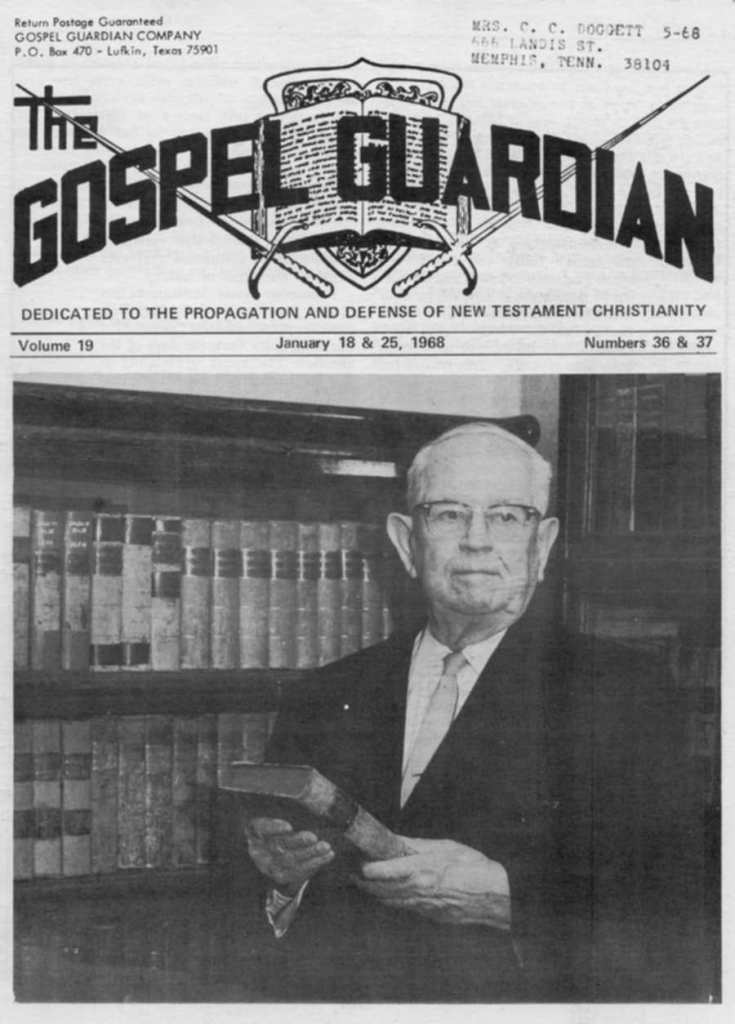Early on in his biography of James A. Harding, Lloyd Cline Sears includes some reminiscences from Harding about Benjamin Franklin:
Years after Benjamin Franklin’s visits in his home Harding recalled with gratitude his influence, and that of others, on his life: ‘I knew Brother Franklin well. I read his paper when I was about ten years old, and read it eagerly till he died, about nineteen years later. I was with him in a number of protracted meetings… Alexander Campbell, Barton W. Stone, Benjamin Franklin, and David Lipscomb, I think, have done more for apostolic Christianity than any other four men since the Apostle Paul died.‘
The Eyes of Jehovah: The Life and Faith of James Alexander Harding, pp. 9, 10.
This might sound shocking to our ears: we have grown unaccustomed to hearing this sort of talk in our own time, and we have forgotten how common it once was. We have forgotten a time when it was non uncommon for church members to name their children after these men, and other well known evangelists. But Harding was unselfconscious in acknowledging his intellectual and spiritual debts.
So too was John T. Lewis. In the Introduction to his 1932 work The Voice of the Pioneers on Instrumental Music and Societies, Lewis cites Ecclesiastes 12:11: “The words of the wise are as goads; and as nails well fastened are the words of masters of assemblies, which are given from one shepherd” (quoted from the 1901 American Standard Version, Lewis’ typical text). Drawing on these words, especially the phrase “masters of assemblies,” he writes:
I consider the pioneers of the nineteenth-century Reformation ‘masters of assemblies’ — the ‘Milky Way’ — in the galaxy of the ecclesiastical heavens — unequaled by any inspired group.
Voice of the Pioneers, Introduction (Nashville, Tenn: Gospel Advocate Company, 1932)
Again, shocking to our ears. But might we acknowledge that Lewis had good reasons for this attitude? For one, he learned it from his teachers at the Nashville Bible School, notable among them James A. Harding. For another, he learned it through a self-directed, multi-year reading and study program in the literature of the first two generations of the Movement, in particular Alexander Campbell’s Millennial Harbinger, which we can reasonably suppose that Lewis had read from cover to cover. We might go as far as to say that, in the debates among the churches in the 1920s, 30s, and 40s over a variety of issues — from prayer posture and the headcovering to Christian participation in warfare — perhaps only L. L. Brigance possessed a better command of the literature of the pioneers that was disputed in these arguments. Be that as it may, both men displayed a facility with the sources that their opponents could not match.

